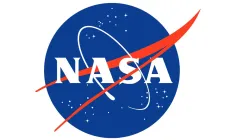Lunar Mission Countdown: NASA's 5 payloads set to launch for Moon
The payloads will also provide data to NASA’s Lunar-VISE (Lunar Vulkan Imaging and Spectroscopy Explorer) instrument suite, slated to land on the Gruithuisen Domes in 2026.

NASA, The United States space agency is set to poise for a significant lunar exploration milestone as it prepares to launch five payloads to the Moon on Monday (8January 8). These payloads will be carried aboard Astrobotic's Peregrine lander, aptly named Astrobotic Peregrine Mission One. This will mark NASA's first launch of the year and will further represent a crucial step in its Commercial Lunar Payload Services (CLPS) initiative. The launch is scheduled to take place from Cape Canaveral, Florida, utilizing a United Launch Alliance Vulcan rocket.
The payloads on board are equipped with a range of scientific instruments designed to advance our understanding of lunar conditions. NASA's mission objectives include the identification of water molecules on the Moon's surface, the measurement of radiation and gases surrounding the lander, and the evaluation of the lunar exosphere—the thin layer of gases on the Moon's surface. These measurements are integral to enhancing our comprehension of how solar radiation interacts with the lunar landscape, contributing valuable insights to the broader field of lunar science and exploration. The launch represents a collaborative effort between NASA and Astrobotic, reinforcing the commitment to advancing space exploration capabilities and knowledge.
The payloads will also provide data to NASA’s Lunar-VISE (Lunar Vulkan Imaging and Spectroscopy Explorer) instrument suite, slated to land on the Gruithuisen Domes in 2026.
“We are so excited to see this vision become a reality. CLPS is an innovative way of leveraging American companies to send important science and technology payloads to the Moon,” said Nicola Fox, associate administrator, Science Mission Directorate at NASA Headquarters in Washington.
“The Moon is a rich destination for scientific discovery. Studying and sampling the lunar environment will help NASA unravel some of the greatest mysteries of our solar system for the benefit of all,” Fox added.
The Peregrine lander is targeted to land on February 23 at Sinus Viscositatis, a lunar feature outside of the hardened lava Gruithuisen Domes on the near side of the Moon. Similar natural structures on Earth require large volumes of water to form, leading scientists to believe that this landing site may contain evidence of water on the Moon, said NASA.
Astrobotic is one of 14 vendors eligible to carry NASA payloads to the Moon through the CLPS initiative, which began in 2018.
ALSO READ: Amazon Prime Gaming: Here are free games for January 2024
Inputs from IANS